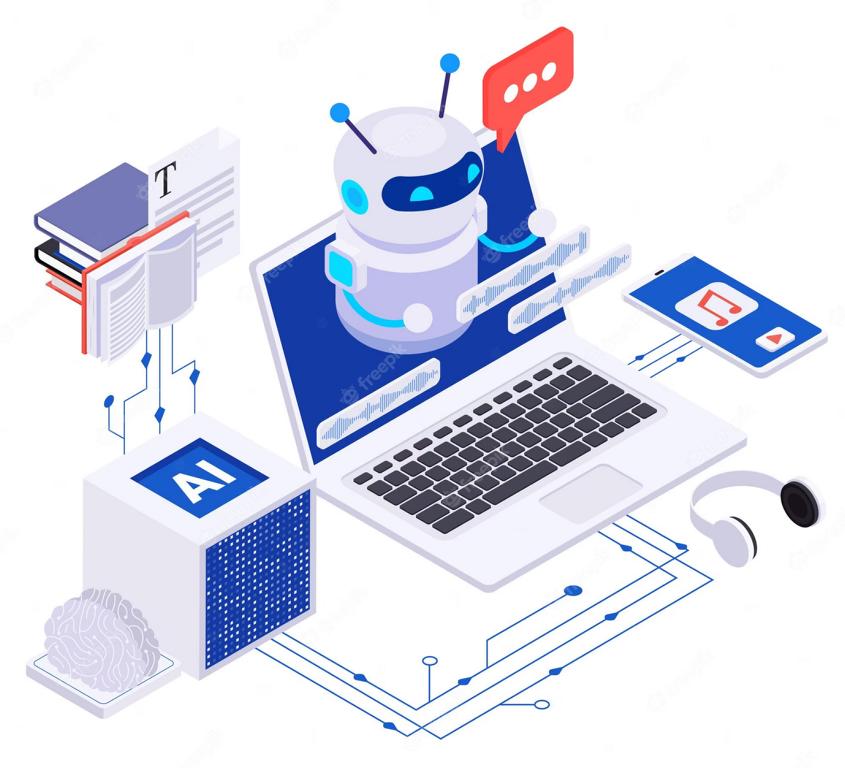Subtitling is a crucial element in audiovisual content production that enhances accessibility and enables wider audience reach. In recent years, advancements in artificial intelligence (AI) have led to the emergence of AI subtitling solutions, raising questions about their effectiveness compared to traditional manual subtitling methods.

To determine which approach is right for your business, you need to consider various factors. Let’s delve into an in-depth analysis of AI subtitling versus manual subtitling and explore how to make an informed decision.
AI Subtitling
Instead of relying on human linguists to transcribe spoken content, AI steps in with its advanced algorithms, such as Machine Learning and Natural Language Processing to process audio files, decipher human speech, and convert it into text – all at an impressive speed.
Pros

1. Speed and Efficiency: AI subtitling can process large volumes of content quickly, making it ideal for time-sensitive projects or high-output environments.
2. Cost-effectiveness: Automated solutions can be more cost-effective than hiring human subtitlers, especially for projects with tight budgets.
3. Consistency at Scale: AI subtitling provides uniformity in formatting, timing, and style across large volumes of content. This is particularly advantageous for maintaining a consistent brand voice and user experience.
4. Multilingual Adaptability: The ability of AI to process multiple languages concurrently is a boon for global content distribution. This is ideal for platforms seeking to cater to diverse linguistic audiences.
Challenges:

1. Accuracy and Context: AI may struggle with accurately capturing nuances, cultural references, and context, leading to potential mistranslations or misinterpretations.
2. Complex Content: Technical, specialized, or creative content may pose challenges for AI, requiring human expertise to ensure accurate subtitling.
3. Proofreading Required: While AI can generate subtitles, human review is essential to catch errors and ensure the quality of the final product.
Manual Subtitling
Manual Subtitling relies on the expertise of skilled linguists. These language experts Manual Subtitling relies on the expertise of skilled linguists. These language experts play a crucial role in transcribing dialogue and narration from videos into written text.

Pros
1. Quality and Accuracy: Human subtitlers can better understand context, cultural nuances, and idiomatic expressions, leading to more accurate and contextually relevant subtitles.
2. Adaptability: Skilled subtitlers can adjust subtitles to match the pacing and rhythm of dialogue, enhancing the viewing experience.
However, several companies are also integrating these features into their subtitle tools.
3. Complex Content: Manual subtitling is better suited for content that requires expertise, such as technical or creative subjects.
4. Cultural Sensitivity: Human subtitlers can ensure that content is culturally sensitive and respectful, avoiding potential misinterpretations.

Cons:
1. Time and Cost: Manual subtitling is labor-intensive and time-consuming, which can lead to higher costs and longer project timelines. For YouTube video, it would take at least 24 hours before the upload video can get time-coded subtitles which can severely impact the initial engagement boost.
2. Inconsistency: Different subtitlers may have varying interpretations, leading to inconsistencies in formatting, style, and timing.
3. Language Limitations: Manual subtitling might be constrained by the availability of skilled subtitlers for less common languages. Moreover, you have to hire a new professional for every new language.
How to Decide: Which is the Right Choice for You?

1. Content Type: Consider the complexity and subject matter of your content. If it involves technical, creative, or nuanced aspects, manual subtitling is likely more suitable.
Creators and Niches that Prefer AI Subtitling:
1. Information Tutorials:
AI subtitling is well-suited for creators offering informational tutorials. These videos often require accurate and easily understandable subtitles. For instance, a channel providing coding tutorials can benefit from AI-generated subtitles for quick content delivery.
2. News Agencies:
News outlets frequently need to subtitle breaking news videos swiftly. AI subtitling can aid in quickly disseminating crucial information to audiences in real-time.

3. Transcription Services:
Creators offering transcription services might use AI-generated subtitles as a foundation, later refining them manually for optimal accuracy.
4. Social Media Influencers:
Creators producing short-form content for social media platforms may use AI subtitling to make their content more accessible and engaging.
5. Simple Product Demonstrations:
Businesses showcasing straightforward product demos or explanations can utilize AI-generated subtitles to add accessibility without significant human intervention.
6. Educational, Legal and Medical Content:

Educational content including legal, financial and medical content usually restricts to strict translations and does not have too many cultural references or colloquial terminologies which is why Ai subtitles are suitable for such videos.
7. Marketing Agencies:
Marketing agencies may lean towards AI subtitling for campaigns requiring frequent content updates and quick turnarounds.
Creators and Niches that Prefer Manual Subtitling:
1. Comedy and Humor Creators:
Creators in the comedy, humor, or theatrical skit genres often rely on nuanced timing, cultural references, and context. Manual subtitling ensures the comedic essence isn’t lost. For instance, a stand-up comedian’s video involves wordplay and timing that AI might misinterpret, leading to a loss of humor.

2. Film and Artistic Content:
Filmmakers and artistic content creators prioritize maintaining the artistic vision, requiring human subtitlers to capture subtleties and emotions, and to preserve the depth of the performances.
3. Production Companies:
Production companies working on high-budget films or premium content should prioritize manual subtitling for impeccable quality.
2. Budget and Time Constraints: Assess your budget and project timeline. AI subtitling might be preferable for projects with tight schedules or limited funds, while manual subtitling offers higher quality but at a higher cost.

3. Languages: For multilingual content, AI subtitling could provide a quicker solution, whereas manual subtitling would require you to spend time on hiring several professionals.
4. Review and Proofreading: Regardless of the method chosen, human review and proofreading are critical to catch errors and ensure the final product’s quality.
When to Choose AI Subtitling:
High-Volume Content Providers: Businesses or creators generating a large amount of content regularly, such as news agencies, vlogs, or social media platforms, can benefit from AI subtitling due to its speed and efficiency.

Quick Turnaround: Time-sensitive projects, like live broadcasts or breaking news updates, may require rapid subtitling deployment, making AI an attractive option.
Limited Budget: Startups, small businesses, or individuals with budget constraints may find AI subtitling more cost-effective than hiring manual subtitlers.
Multilingual Content: For content targeting diverse audiences speaking different languages, AI subtitling can handle multiple languages simultaneously.
Baseline Subtitles: When basic, accurate subtitles are sufficient, such as in straightforward instructional videos or presentations, AI-generated subtitles can suffice.
When to Choose Manual Subtitling:
Content with Nuances: Films, documentaries, creative projects, or content with cultural nuances, idiomatic expressions, or humor benefit from human subtitlers’ understanding of context.

Technical or Specialized Content: Complex subject matter, such as scientific research, legal documents, or specialized industry jargon, requires human expertise to ensure accurate and contextually relevant subtitles.
Brand Identity: Businesses that prioritize a consistent brand voice and style benefit from manual subtitling, as human subtitlers can tailor subtitles to match the brand’s tone.
High-Quality Productions: Premium content, like feature films, high-budget commercials, or educational videos, should opt for manual subtitling to maintain the highest quality and viewer experience.

Cultural Sensitivity: Content that may have cultural sensitivities or historical context necessitates human review to ensure respectful and accurate subtitling.
Combining AI and Manual Subtitling
Combining both approaches can also be a viable solution, using AI for initial generation and human subtitlers for review and refinement. This ensures a balance between speed and accuracy, making it suitable for a wide range of content types and creators. Language service providers & E-Learning platforms can use AI-generated subtitles as a starting point, refining them manually to meet the linguistic and cultural demands.
Striking a Balance and Making the Final Decision

The choice between AI subtitling and manual subtitles doesn’t necessarily have to be a stringent one. In most cases, it’s not about choosing one over the other, but about finding a balance that best suits your requirements. Factors such as project requirements, time constraints, budget, and level of linguistic complexity should be the primary influencers in your decision. No matter what your choice is, the aim should be to make subtitles that are accurate and offer a quality viewing experience to your audience. Play your part in shaping the future of video content with well-informed choices.


